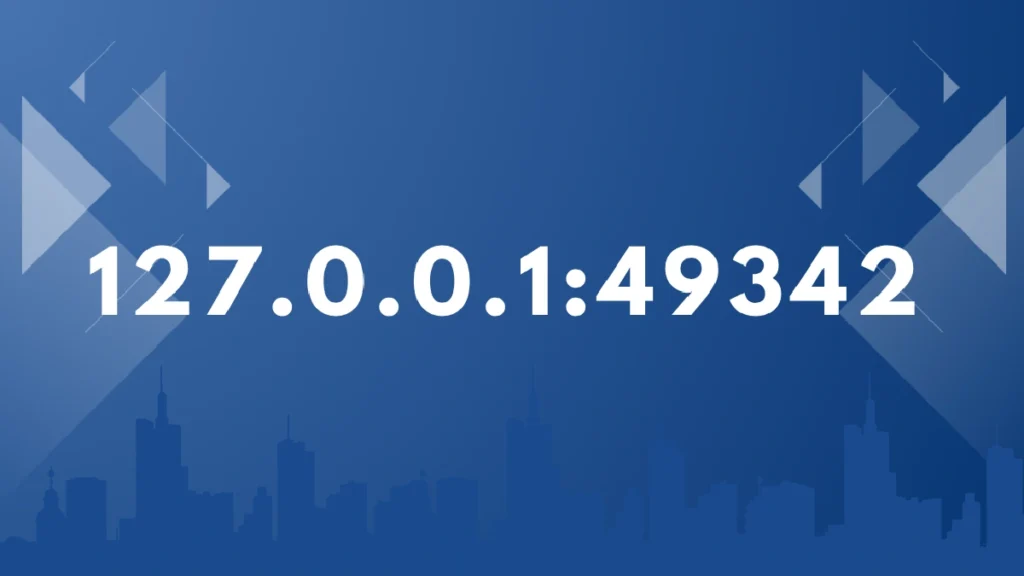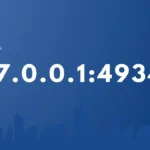Introduction to 127.0.0.1:49342
If you’ve ever noticed something like 127.0.0.1:49342 pop up on your screen, you’re not alone. For many people, it looks like a string of numbers or maybe some kind of error. In reality, it’s a technical address used mostly in computing and networking. The numbers might look complicated, but they serve a simple and important purpose — helping your computer talk to itself.
This kind of address, starting with 127.0.0.1, refers to what’s called a loopback address. It’s a way for your machine to send information to itself. The extra part — :49342 — refers to a port, which is like a door or a channel that handles specific tasks or communication.
In this blog post, we’ll break everything down in a way that’s super easy to understand. You don’t need to be a tech expert. We’ll go over what 127.0.0.1:49342 really is, why it matters, how it works, and more. Stick around — this is simpler than it looks.
What is 127.0.0.1:49342?
To understand 127.0.0.1:49342, we need to break it into two parts: the IP address 127.0.0.1 and the port number 49342.
127.0.0.1 is called the loopback IP address. It’s a special address used to send network requests back to the same device — in other words, your computer talks to itself using this address. It’s mostly used for testing and troubleshooting.
The number after the colon, 49342, is a port. Think of it like a specific door in a building. Just like buildings have many doors for different purposes, computers use many ports for different tasks. Port 49342 is randomly chosen by software when it needs a temporary communication channel.
So, 127.0.0.1:49342 is your computer communicating internally through a specific port. This often happens when you’re developing software or running a local server. It’s safe, it’s normal, and it’s very useful — even if it looks confusing at first glance.
Why is 127.0.0.1:49342 Important?
Understanding 127.0.0.1:49342 matters, especially if you deal with software, web development, or computer networking.
Here’s why it’s important:
- Local Development
Developers often use 127.0.0.1 to test websites or apps locally before going live. - Troubleshooting
It’s a great tool for checking if your networking setup is working properly. - Security Testing
You can safely run and test applications on your own machine without exposing them to the public internet. - Isolated Environment
It helps avoid network delays or outside interference while running services locally. - Resource Access
Internal applications might use a port like 49342 to pass data back and forth quickly.
So when you see 127.0.0.1:49342, don’t panic. It’s just your computer doing its job internally in a very efficient and secure way.
Step-by-Step Guide on 127.0.0.1:49342
Want to use 127.0.0.1:49342 for testing or development? Here’s a simple guide:
- Install a Local Server
Tools like XAMPP, WAMP, or Node.js allow you to host content on your machine using 127.0.0.1. - Start the Server
Launch the server, and it will bind to 127.0.0.1 using a dynamic port like 49342. - Access the Address
Open your browser and go to http://127.0.0.1:49342. This lets you view your project as if it’s online, but it’s only on your system. - Debug Your Code
Make changes to your app or website and refresh the browser to see updates instantly. - Use Developer Tools
Open browser tools (like Chrome DevTools) to monitor errors, requests, or performance. - Stop the Server
Once testing is done, stop the server to free the port and resources.
This is the easiest way to simulate how your app or website will behave when it’s live.
Advantages and Disadvantages of 127.0.0.1:49342
Let’s look at the pros and cons of using 127.0.0.1:49342:
Advantages
- Safe Environment
It runs locally, reducing risk from external threats. - Fast Testing
Local connections are quicker since there’s no need for internet access. - Resource Efficient
Doesn’t consume much memory or bandwidth. - No Cost Involved
No hosting or server fees required for local testing. - Instant Updates
You can instantly check the results of code changes.
Disadvantages
- Not Publicly Accessible
No one else can view or test your app unless it’s deployed online. - Limited to Your Machine
Can’t test across multiple devices unless you configure local networking. - Random Port Issues
Ports like 49342 can change, causing confusion if not properly managed. - Firewall or Security Tools May Block It
Sometimes local connections are restricted by your system’s firewall.
Despite the few downsides, it’s a valuable tool for developers and tech enthusiasts.
Common FAQs About 127.0.0.1:49342
1. Is 127.0.0.1:49342 dangerous?
No. It’s completely safe. This is your computer talking to itself, commonly used for development or testing.
2. Can someone else access 127.0.0.1:49342?
No, it’s local-only. No one outside your computer can reach this address.
3. Why is the port number so high?
Port 49342 is part of the dynamic/private range. It’s randomly selected by applications.
4. Do I need to configure this manually?
Usually not. Most local development tools handle this automatically.
5. What if I get an error accessing 127.0.0.1:49342?
Check if the service or server is running. Also, make sure your firewall isn’t blocking the port.
6. Is this related to malware or hacking?
No. Unless you installed suspicious software, this is typically a safe and routine address.
Conclusion on 127.0.0.1:49342
Now that you’ve reached the end of this guide, 127.0.0.1:49342 probably doesn’t seem as mysterious anymore. It’s simply your computer using a temporary internal port to test or communicate with itself. For developers, it’s one of the most essential tools in the toolbox. For casual users, it’s just a harmless part of how applications work behind the scenes.
You don’t need advanced knowledge to understand this concept. Once you break it down, it’s easy to see how it helps developers build, test, and debug programs right on their machine — without needing to connect to the internet or worry about external risks.
If you’re ever working with a local server, learning to use addresses like 127.0.0.1:49342 can help you speed up your work, keep things secure, and save costs on hosting services. So next time you see this type of address, you’ll know it’s nothing to fear — just your system doing its job.
Bonus Points on 127.0.0.1:49342
- Used in Modern Development Tools: Frameworks like React, Angular, and Laravel often use 127.0.0.1 with dynamic ports during development.
- Great for Learning: Beginners can explore programming, web development, and server management without needing a real hosting provider.
- No Risk of External Attacks: Since it’s a loopback, it’s not accessible from outside — making it ideal for testing sensitive features.
- Speeds Up Development: Since the server is right on your machine, page loads and code changes happen almost instantly.
- Customizable: Advanced users can manually assign ports or use configurations to bind applications to specific addresses or ports.
These points show just how versatile and beneficial 127.0.0.1:49342 is, especially in a development setting.






